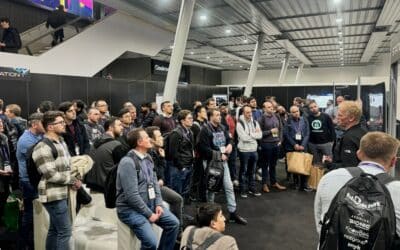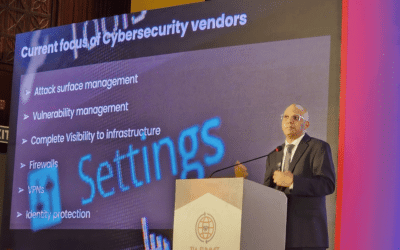ARTICLE
Context and People-Centric Internet Experiences

Context is Key
Networking 2.0 is a major shift in Internet technology. In today’s interconnected world, data is constantly flowing, creating a vast network of information. This ever-expanding digital landscape demands a deeper understanding of context—the ability to interpret and act upon information in a meaningful way.
Our introductory article summarizes context as, “information that is available about a person, entity, or thing at a given time, and includes data such as location, preferences, transit details, and more, [allowing] devices, applications, and people to make better decisions and provide more personalized experiences.”
Enhancing Our Daily Experiences
Traditional networking approaches often treat data as isolated entities, failing to consider the surrounding context. Today, an application may see that a person is in Paris, and will assume that the person should see ads focused on all the tourist attractions, even if they’ve visited multiple times before. The app does not take into account the individual’s preferences. This lack of context can lead to misinterpretations, inefficiencies, and if relying on data stored in centralized servers, massive security vulnerabilities.
While we are already able to personalize our experiences on the Internet to some extent, it is only for a particular moment in time. For example, when we want to buy something from an online marketplace, we either have to create an account–and then keep that information up-to-date–or check out as a guest, meaning we have to re-input our information each time we make a purchase. Multiply this by the number of online retailers we have used, and it is evident how much time and energy is wasted.
Data in Our Hands
In Networking 2.0 we control all our information, keeping it up-to-date, instead of it being stored in some company’s centralized server, where it is outdated and vulnerable to network attacks. This control allows us to tailor our experiences wherever we go.
Imagine going into a department store and pulling up their app and having a list of clothes already curated just for your style, body structure, and utility; when you leave the store, you can then revoke their access to your data, meaning your personal information isn’t stored in a centralized server. Additionally, each place you visit could ask your permission to view your personal information in order to continue providing customized services, and again, when your experience or transaction is completed, you revoke access to your data.
If you are a retailer, this makes for a more engaged customer base, one that appreciates and respects you for providing them with exactly what they want and need. And with Networking 2.0 technology, your business is compliant with GDPR, CCPA, and all other data regulation.
Context allows us to move about the world in a way that is curated just for us, individually, using our preferences, instead of AI’s best guess based on limited data. Furthermore, when we have control of our data, these experiences become more secure as we dictate to whom and to where our data flows and when it stops flowing.
Paradigm Shift
Networking 2.0 breaks away from the limitations of traditional networking by embracing the principles of context awareness. It empowers devices and applications to understand their environment, adapt to changing conditions, and make intelligent decisions without the need for centralized control.
Context awareness enables networks to gather and interpret information about their surroundings. This includes factors such as device location, identity, behavior, and individual preferences.
Networking 2.0 empowers us to harness the power of context, transforming how we interact with data and enhancing our digital experiences. As we move forward, context will become increasingly important, driving innovation and shaping the future of networking. Early adopters of Networking 2.0 technology will have a huge advantage as they harness context to make great customer experiences.
For a further breakdown of the possibilities of Networking 2.0 experiences, take a look at CTO Colin Constable’s article.
Prevention is the Untapped Solution to Cybersecurity Needs
Anthony Prakash reveals how prevention is the solution to cybersecurity problems, with Networking 2.0 technology paving the way.
Atsign Granted Patent for the atProtocol
Atsign was granted a patent for the atProtocol, a revolutionary, open-source, Networking 2.0 technology.
Atsign at BlackHat Europe
Atsign attended BlackHat Europe, showcasing Networking 2.0 technology with the award-winning remote access tool, SSH No Ports.
Atsign at the TIA Summit
Atsign recently spoke at the India Advantage Summit (TIA) about Networking 2.0 and the future of networking technology.
ROI with Networking 2.0
Networking 2.0 can reduce networking costs by up to 73%. See how this innovative technology is changing networking forever.




